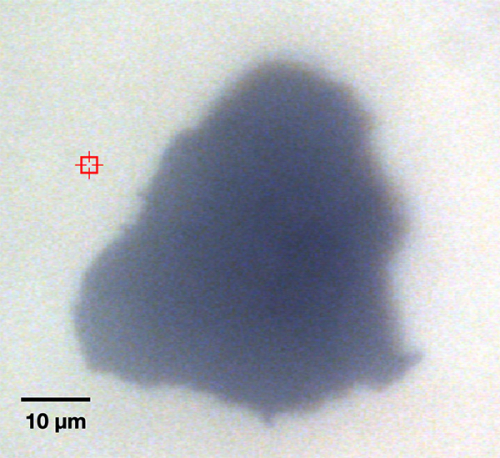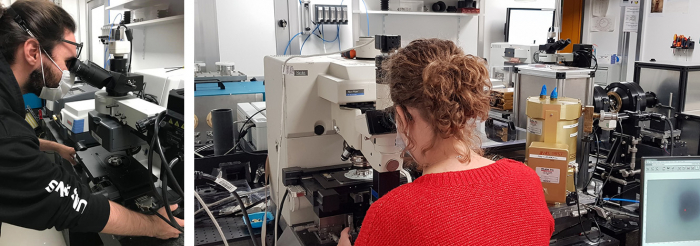On July 5th, the "Astrochemistry and Origins" team at Institut d’Astrophysique Spatiale (IAS, Orsay;CNRS / Paris-Saclay), in collaboration with the SMIS beamline, started the analysis of several Ryugu micrometric grains, by Fourier transform infrared micro-spectroscopy and micro-tomography.
The Japanese Hayabusa2 / JAXA sample return mission is dedicated to the study of the C-type near-Earth asteroid (162173) Ryugu. The goal is to determine Ryugu’s composition, origin, history and its possible links with meteorites collected on Earth, and with other primitive asteroids. After characterizing Ryugu’s surface, Hayabusa2 performed two sample collections directly at the asteroid. After the recovery of the capsule in December 2020, the 5.5 g of samples collected were transported to the JAXA “curation” facility (ISAS, Sagamihara) to be sorted, cataloged and pre-characterized by non-destructive techniques. Hyperspectral imaging in the near infrared (1-3.6 µmis being carried out using the MicrOmega instrument by the Planetary Science team at IAS.
The preliminary analysis phase organized by JAXA started in June 2021. It involves a number of international teams organized according to well-defined scientific objectives, such as the determination of the elemental and isotopic composition of samples, the study of the mineralogy and petrology of coarse grains and finer particles, the analysis of volatile compounds, and the characterization of soluble and insoluble organic components extracted from the collected grains.
The “Astrochemistry and Origins” team at IAS, in collaboration with the SMIS beamline, is involved in the analysis of Ryugu grains, in particular thanks to the FTIR micro-tomography technique.
IAS scientists are part of the international team of analyzes coordinated in Japan by T. Nakamura (University of Tohoku, Sendai) and their contribution will be focused mainly on micro-spectral-imaging in the mid- and far infrared (2-50 µm). They will focus on the interactions between mineral and organic phases to better understand the physico-chemistry that links them. One of their primary goals will be the detection of hydrated materials and the reconstruction of Ryugu's history of aqueous weathering. The study of these micrometric samples will give valuable information on the formation conditions and the evolutionary processes of matter in the early Solar System.
After a long journey, a few dozen small grains of Ryugu have finally arrived at IAS. The "Astrochemistry and Origin" team received them and started a series of preliminary measurements, using various microscopes of IAS and of the SMIS beamline at SOLEIL (figures 1& 2).
Following this first step of analysis, grains will be selected to be welded on metal needles, using a protocol developed in collaboration with D. Troadec (IEMN, Lille) and E. Héripré (Ecole Centrale, Saclay). These samples will then be ready for the next analytical step, i.e. the characterization by infrared micro-tomography, also at the SMIS beamline.

Figure 1: An image of a Ryugu micrometric grain in its sample holder, ready to be analyzed by FTIR micro-spectroscopy.

Figure 2: Two of the FTIR microscopes used at SOLEIL by IAS researchers for the analysis of Ryugu grains. The microscope on the left is fed by the synchrotron radiation operating in the mid infrared. The microscope on the right measures in the far infrared using a bolometer detector.
